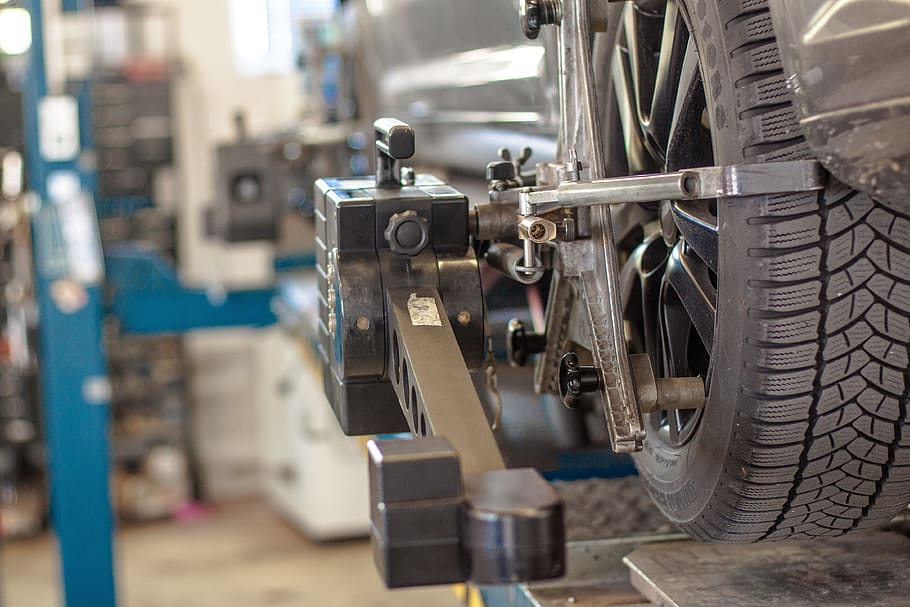How To Choose The Right Air Conditioner For Your Home?
If you’re planning to upgrade your home’s cooling system, it’s essential to familiarize yourself with the top air conditioning units available on the market. Understanding the different options can significantly enhance your ability to make a well-informed decision. Air conditioning goes beyond just cooling; it substantially increases the comfort level of your living space.
Selecting the appropriate air conditioner is crucial for optimizing the atmosphere of your home. This decision not only affects temperature control but also impacts air quality and energy efficiency. By choosing the right system, you can ensure that your home remains a comfortable sanctuary tailored to your specific needs.
The Essential Guide to Selecting the Perfect AC Repair in Las Vegas for Your Home
Understanding Home Air Conditioning System h3
The concept of «air conditioning» includes any mechanism that regulates both temperature and humidity levels within a space. Generally, air conditioners are categorized into ducted and ductless systems. Ductless systems operate with compact units distributed around the house, providing targeted cooling where it’s needed most.
On the other hand, ducted air conditioning features a central unit that efficiently cools the entire home by distributing chilled air through a network of ducts. This setup ensures a uniform temperature throughout various rooms, making it a popular choice for comprehensive home cooling.
Ducted Air Conditioners
Geothermal heat pumps
Geothermal heat pumps harness the Earth’s natural temperature to stabilize indoor climates. Much like a standard heat pump transfers heat between your home and the outside air, a geothermal system uses a network of underground pipes to exchange heat with the soil beneath your house. This process capitalizes on the consistent underground temperatures to cool or heat your home efficiently.
These systems are celebrated for their environmental benefits and long-term operation efficiency. They leverage renewable energy from the ground, making them a sustainable choice for those looking to reduce their ecological footprint.
However, the complexity of installing a geothermal system should not be underestimated. The intricate network of pipes requires precise installation, making this a task for professional installers. Given the technical expertise required and the potential for costly mistakes, entrusting this job to seasoned professionals ensures that the system functions effectively and avoids long-term issues.
Heat pumps
Heat pumps often create confusion among homeowners due to their dual functionality. At its core, a heat pump is an air conditioning unit capable of reversing its operation. While a traditional air conditioner extracts heat from the inside of your home and releases it outdoors, a heat pump can also pull heat from the outside air to warm your home during colder months. This versatile functionality allows the system to provide both heating and cooling through the same setup as a central air conditioning system.
Installing a heat pump does involve a notable investment, which can be considerable but is often offset by the system’s efficiency and the reduction in overall energy use. The ability to both heat and cool with a single system can provide significant savings in the long run, making it a cost-effective solution for year-round climate control.
While some homeowners might consider installing a heat pump themselves to save on costs, this approach comes with challenges. The installation process shares complexities similar to those of more traditional systems, requiring a deep understanding of HVAC systems and possibly specific tools or certifications. For these reasons, and to ensure optimal functionality and safety, it is generally advisable to rely on professional installation.
Central air conditioning
When people discuss air conditioning systems, they’re usually referring to central systems, which serve as an efficient solution for cooling an entire home. If you’ve noticed that some areas of your house are consistently too warm or too cool, a central system might be what you need. However, this doesn’t necessarily mean it’s the best option for every situation, particularly if you’re dealing with uneven temperature distribution throughout your home.
Investing in a new central air conditioning system involves certain costs, which include the equipment and installation fees. Installation alone can account for a significant portion of the total expense. Before you decide to take on such a project yourself, consider whether you have the skills and knowledge required, as it’s not a straightforward DIY task.
Each state in the U.S. has different HVAC licensing requirements, and building permits can vary from one municipality to another. This means that while many homeowners are legally allowed to work on their own HVAC systems, this permission is not universal. The legal landscape can be complex, so it’s crucial to understand your local regulations before proceeding.
Moreover, installing a central air system involves several technical tasks, such as charging the unit with refrigerant. This specific task requires EPA 608 certification, which you might need to obtain or hire a certified professional to handle. Additionally, you’ll need to manage the electrical and ventilation aspects according to local building codes. Even if you don’t require an inspection now, non-compliance could become a significant issue when it comes time to sell your property. Therefore, while a DIY installation of a central air conditioning system is technically possible, it is advisable only for those with advanced DIY skills and a thorough understanding of local regulations.
Ductless Air Conditioners
Ductless air conditioning systems offer a flexible and powerful solution for cooling specific areas of a home or business without the need for extensive ductwork. These systems are particularly effective in immediately impacting the temperature of a room, utilizing either a singular powerful unit or multiple units strategically placed throughout the space. With various models available, homeowners and business owners can choose a ductless system that best fits their cooling needs.
Investing in a ductless air conditioner involves a certain cost, influenced by the type and number of units you choose. Each system is designed to offer an efficient way to cool specific areas, making them an ideal choice for spaces where traditional ducted systems are impractical or too costly to install. Whether you’re looking to enhance the comfort of a single room or multiple areas, ductless systems provide a customizable and cost-effective solution.
Portable units
Portable air conditioning units, similar to window units, are specifically designed to cool individual rooms. These units are typically equipped with wheels for easy mobility, allowing you to move them from room to room as needed. However, it’s important to note that they require regular draining of water, much like a dehumidifier, to function efficiently.
When considering the purchase of a portable air conditioner, be prepared for the associated costs. While the exact price can vary, these units generally fall within a certain range. Investing in a portable air conditioning unit can provide you with the flexibility and convenience of targeted cooling wherever you need it most.
Window units
Window air conditioners are a practical choice for budget-conscious homeowners or those needing to cool just a few small rooms. These units sit on a window sill, drawing in outside air and blowing it back into the room, while the rear part of the unit extends outside to direct condensation away from your home. If your central AC isn’t blowing cold air, a window unit can be an effective temporary solution.
The cost of these units varies, making them accessible for different budgets. When installing a window air conditioner, it’s essential to place it correctly, especially if you live in an apartment building or a multi-family home. Improper placement can trip overloaded electrical circuits and cause water to drip outside, potentially causing inconvenience or damage.
Additionally, living on the first floor requires extra caution, as window air conditioners can pose a security risk. Burglars might push the unit inside to gain access to your residence. Despite these concerns, window air conditioners remain a versatile and convenient option for many homeowners.
Evaporative coolers
Evaporative coolers, commonly referred to as «swamp coolers,» operate quite differently from traditional air conditioners. Instead of removing humidity from the air, they add moisture to create a cooling effect. These coolers introduce fresh air into the home rather than recycling the existing air. To maximize their effectiveness, it’s important to keep windows open while the cooler is running. They are best suited for regions with low humidity levels.
One of the main advantages of evaporative coolers is their cost-effectiveness. They are generally cheaper to buy and significantly less expensive to run compared to traditional air conditioning systems. However, they do require regular maintenance and a steady water supply to function properly. While portable air conditioning units are available, evaporative coolers offer a more budget-friendly alternative for cooling your home.
 Installing a whole-house evaporative cooler can be a cost-effective project for those who are handy with ductwork and basic electrical tasks. The initial cost of these units is relatively low, and the installation process can be manageable for DIY enthusiasts. However, it’s essential to ensure proper installation to achieve optimal performance and longevity of the system.
Installing a whole-house evaporative cooler can be a cost-effective project for those who are handy with ductwork and basic electrical tasks. The initial cost of these units is relatively low, and the installation process can be manageable for DIY enthusiasts. However, it’s essential to ensure proper installation to achieve optimal performance and longevity of the system.
Mini-split systems
Mini-split systems are designed to offer customized heating and cooling for individual rooms in your home. These units feature small heat pumps paired with mounted fans that efficiently cool specific areas. The growing popularity of mini-splits is largely due to their impressive efficiency and ability to provide targeted climate control, making them a preferred choice for many homeowners.
When considering the cost of mini-split systems, be prepared for a range that varies based on the unit and installation requirements. Connecting these units to ductwork, particularly with ceiling models, can increase the overall expense. As with any central air conditioning project, it’s crucial to review local regulations before attempting a DIY installation to ensure compliance and safety.
Conclusion
Maintaining your air conditioner, regardless of its type, is crucial for smooth and efficient operation. From changing or washing filters in mini-splits and window units to inspecting outdoor units for seasonal damage, regular upkeep is necessary. Proper maintenance can prevent issues and prolong the lifespan of your system.
Specialty air conditioning systems, like evaporative cooling and geothermal systems, come with distinct requirements. Evaporative systems need a water source, and geothermal systems can be particularly challenging to repair if the buried loop encounters issues. Thorough research and understanding of these systems’ specific maintenance needs and associated costs are essential before making a decision.



